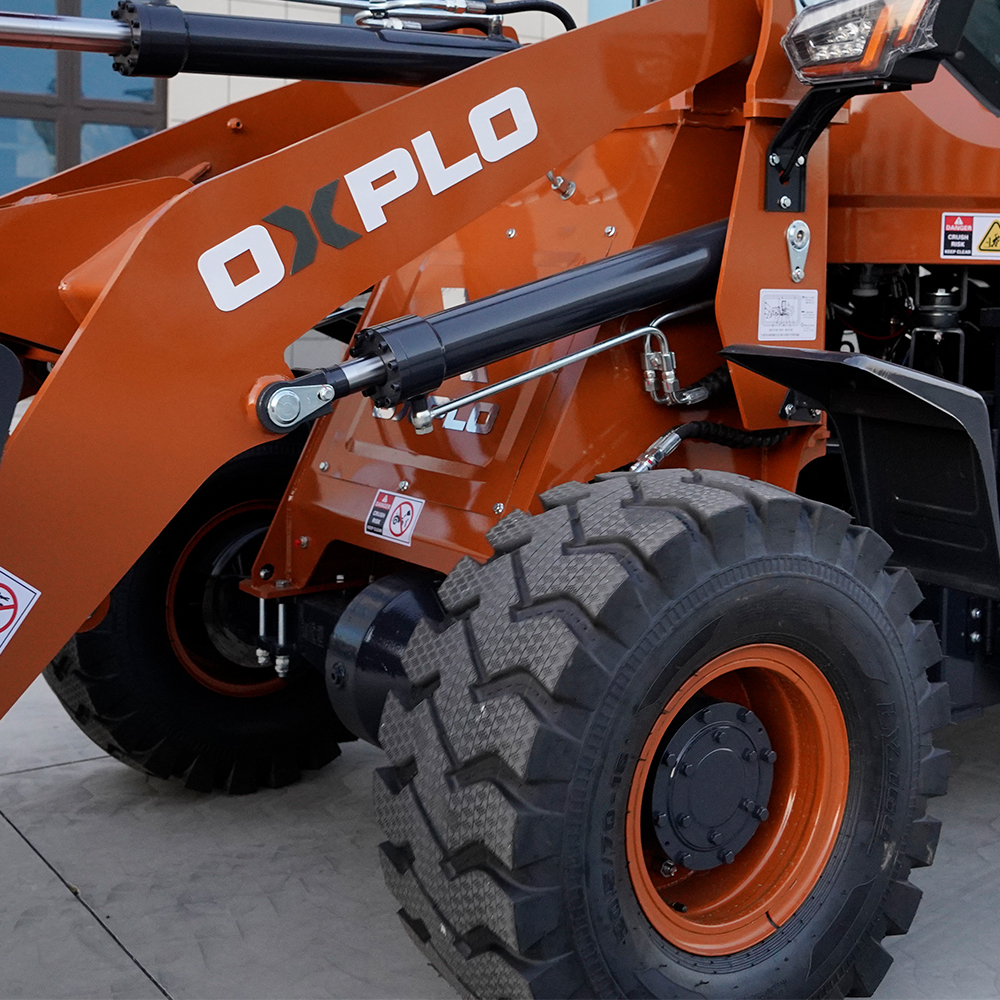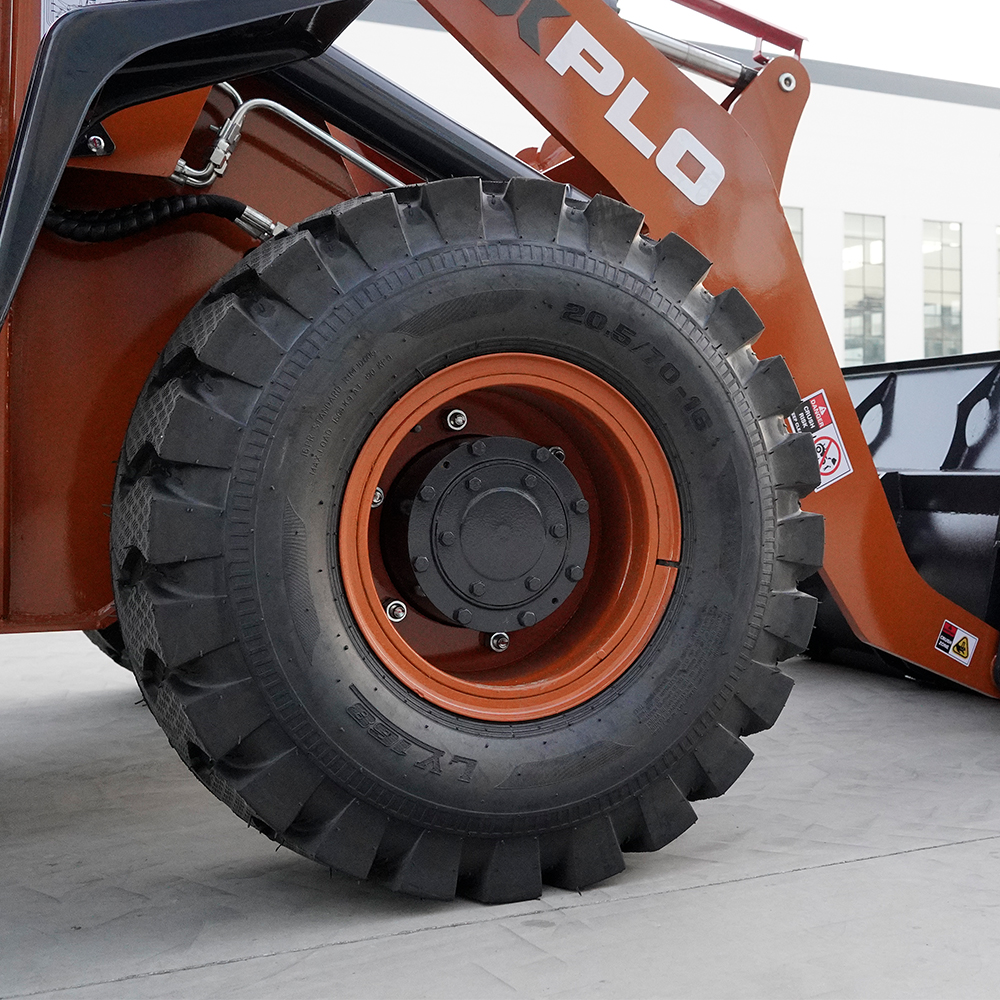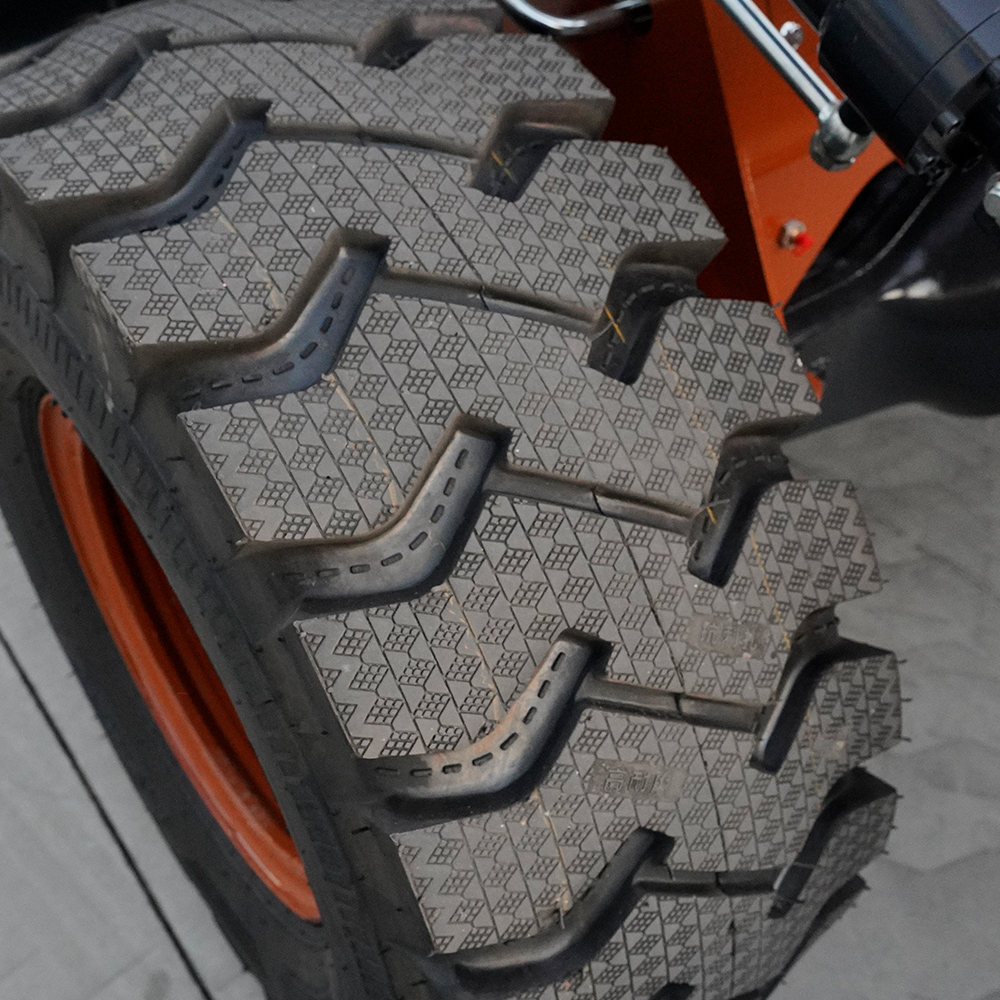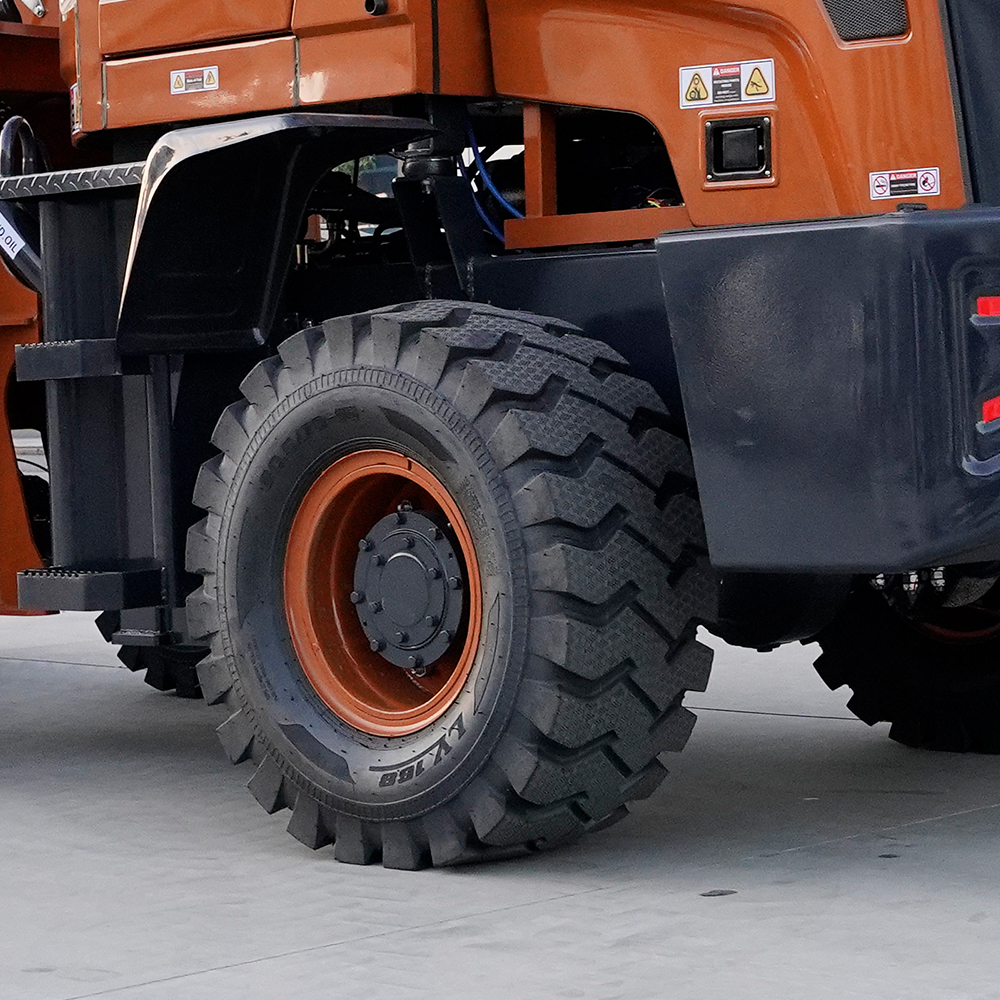How to maintain wheel loader tires
2024-06-27
Tire is an important part of wheel loader, its wear and damage will directly affect the performance and safety of the machine. By maintaining proper tire pressure, rotating the tire position regularly, performing regular wear checks, and maintaining proper symmetrical assembly, tire wear can be reduced, tire life can be extended, and tire replacement costs can be reduced. OXPLO is a professional manufacturer of wheel loaders with extensive experience and can provide you with professional advice on maintaining your tyres.

1. Maintain the correct tire pressure: Check the tire pressure regularly to make sure they meet the manufacturer's recommended standards. Too high or too low air pressure will have an adverse effect on the tire. Low pressure causes excessive tire wear and increased fuel consumption, while high pressure causes severe tire wear in the center. Using the right air pressure can improve the durability and performance of the tire.
2. Clean the tires regularly: often clean the soil, oil and other impurities on the surface of the tires. These substances corrode tire rubber and shorten its life. Wash with water and a mild cleaning agent, then dry with a soft cloth.
3. Avoid excessive load: Ensure that the tire does not exceed its rated load limit. Excessive load can cause tire deformation, accelerated wear and damage. Know the load rating of the loader and follow the manufacturer's recommendations.
4. Regular tire rotation: Regular tire rotation can evenly distribute tire wear. Uneven front and rear tire wear can lead to erratic driving and reduced tire life.
5. Avoid heavy driving and sharp braking: Avoid heavy acceleration, sharp braking and sharp cornering, which increase the risk of tire wear and damage.
6. Regularly check the wear and tear of the tires: regularly check the wear of the tires, if you find uneven tire wear, cracks, perforations or other damage, you should replace the tires in time.
7. Adapt to road conditions: Choose the right type of tire according to the working environment and road conditions. If you often work in harsh ground conditions, consider using tires that are more resistant to wear and puncture.

When storing tires, the right approach can help protect them and extend their life by making sure they are clean and dry before storing them. Remove dirt, oil and other impurities from the surface of the tire and wash it with water and a mild cleaning agent. Then dry with a soft cloth. Also choose a cool, dry place that is out of direct sunlight, such as a warehouse or garage. If you cannot avoid direct sunlight, you can use a tire cover or cover to protect the tire. Keep tires away from oil, solvents, acids, alkalis and other chemicals. These substances can damage tire rubber and cause deformation or corrosion. Do not stack tires on top of each other, especially during storage, as heavy stacking may distort or damage the shape of the tires. It is best to store the tires upright or vertically, or use a tire rack to suspend the tires. If the tire is stored for a long time, it is recommended to turn the tire regularly to evenly distribute the pressure of the tire. This helps prevent flat parts of the tire. It is also important to maintain proper air pressure when storing tires. Too low air pressure may cause tire deformation, while too high air pressure may cause tire damage. Check the tire pressure regularly and adjust it according to the manufacturer's recommendations. Finally, hanging the tires for a long time may cause the tires to deform. If the tires need to be suspended, the suspension position can be changed regularly to avoid pressure concentration in one point.

Moist conditions are ideal for mold and fungi to thrive. The rubber on the surface of the tire can be a place for them to grow. Mold and corrosion can cause spots on the tire surface, discoloration and even damage the tire's rubber material. Moisture also accelerates the oxidation and degradation of tire rubber. This can cause the tire to harden, lose elasticity and gradually damage. Moisture may also enter the interior of the tire through a valve or other defect. This can lead to rust and corrosion of internal parts of the tire (such as steel belts), which in turn affects the structural strength and performance of the tire. The moisture inside the tire in a wet environment may cause the pressure inside the tire to drop. This can cause the tire to warp or flatten, making it require additional air pressure adjustment before use. The uneven distribution of moisture may cause the tire to vibrate during use, affecting the smoothness of the ride and the handling performance of the vehicle.

If it is unavoidable to store tires in a wet environment, we can place anti-moisture MATS or rubber MATS on the ground where tires are stored. These pads prevent ground moisture from penetrating the inside of the tires, reducing the risk of tires getting wet. Alternatively, the tires can be stored higher off the ground, such as using a tire rack or suspension device. This helps prevent the tires from coming into contact with moisture and water on the ground. You can also use some moisture-proof agent, such as silica desiccant or moisture absorption bag, placed in the area where the tire is stored. These moisture-proof agents absorb moisture from the air and keep the storage environment dry. It is very necessary to check the tires regularly to see if there is mold, corrosion or other signs of damage to the tires, and if the problem is found, timely measures should be taken, such as cleaning, mold removal or tire replacement. Use breathable but waterproof tire covers or coverings to protect tires from direct contact with wet environments. This can help reduce the risk of tires getting wet. If the tire has been stored in a wet environment for a long time, turn the tire regularly to evenly distribute the pressure on the tire, which helps prevent the tire from being flat or deformed. The impact of wet environment on tires is very large, so we should try to avoid storing tires in an extremely humid environment for a long time. If possible, it is best to choose dry storage conditions to protect the tires.




